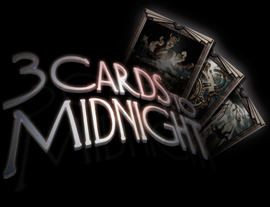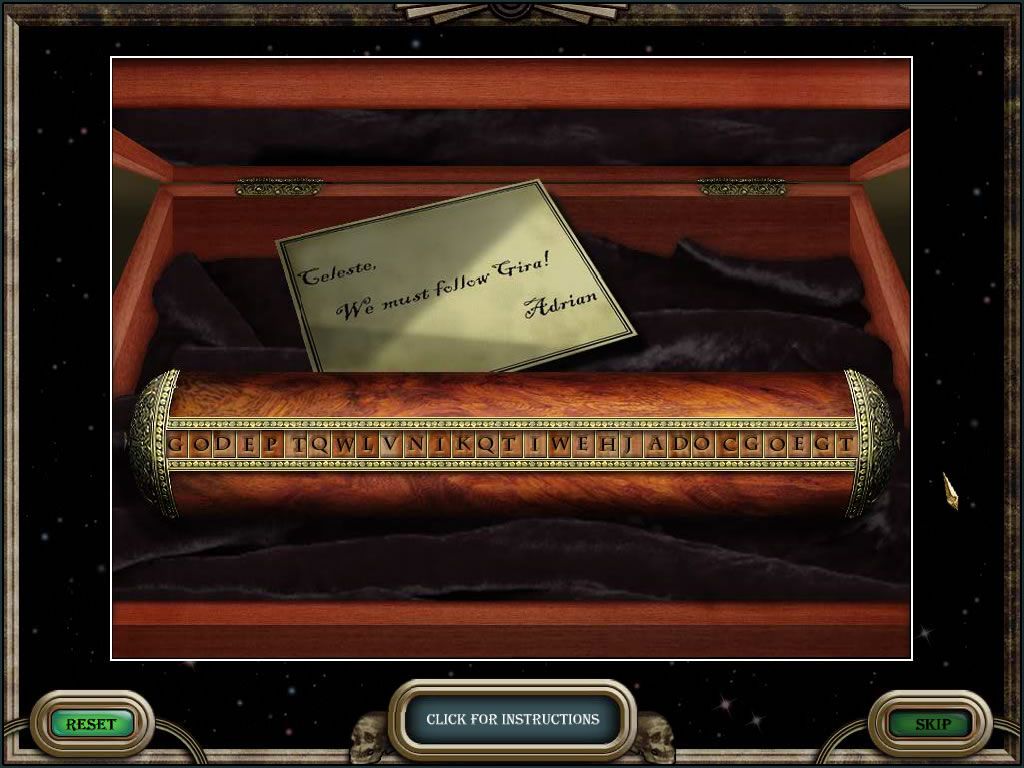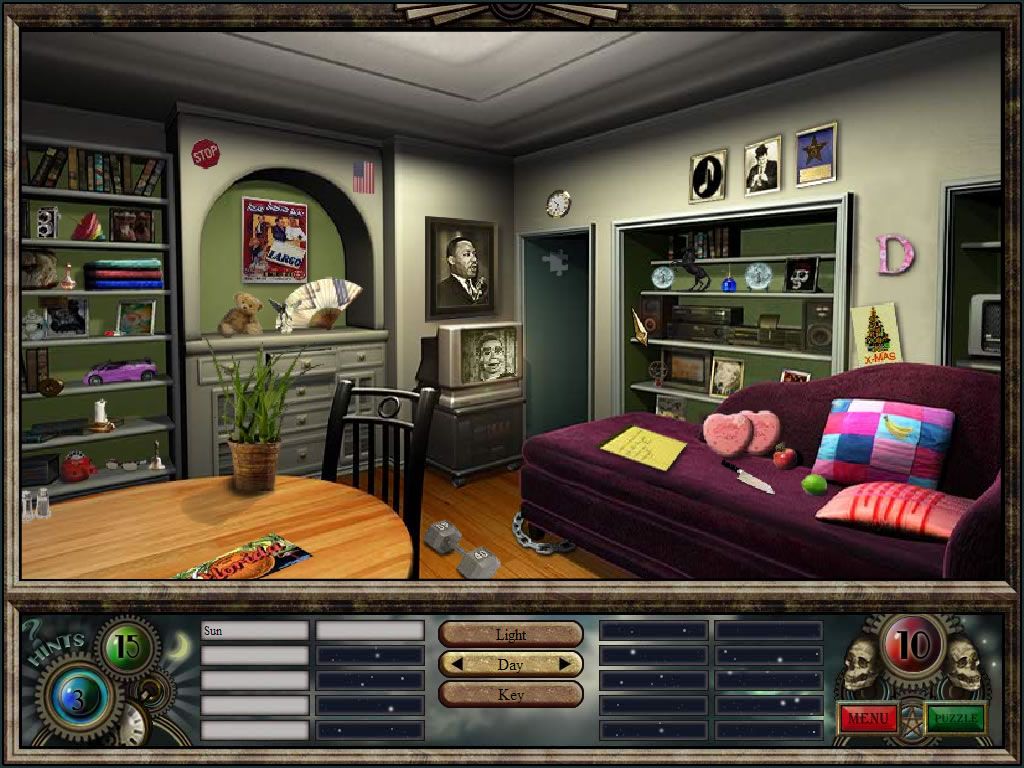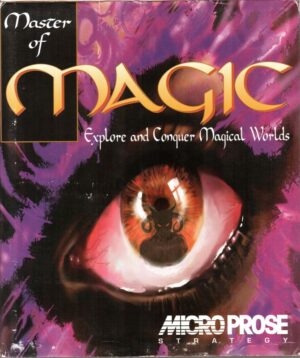Retro Replay Review
Gameplay
3 Cards to Midnight delivers a rich blend of story-driven adventure and classic hidden object gameplay, creating a rhythm that keeps players engaged from start to finish. Each chapter unfolds through animated cinematics that set the tone and introduce new mysteries, followed by interactive hidden object scenes that reinforce the narrative. Rather than simply clicking through lists, players engage in word association puzzles: spotting objects in richly detailed environments to form compound words like “night owl,” which ties directly back into the chapter’s themes.
(HEY YOU!! We hope you enjoy! We try not to run ads. So basically, this is a very expensive hobby running this site. Please consider joining us for updates, forums, and more. Network w/ us to make some cash or friends while retro gaming, and you can win some free retro games for posting. Okay, carry on 👍)
The central mechanic revolves around choosing three tarot cards at the start of each chapter. These cards not only influence the order in which story segments are revealed but also determine the thematic backdrop for the hidden object challenges. A careful choice of cards can lead to different sequences of locations, encouraging multiple playthroughs to uncover every wrinkle in the plot. Each card carries a star rating based on hints used, mistakes made, and bonus puzzles solved, so perfectionists will find ample incentive to revisit and refine their performance.
Interspersed with the hidden object scenes are tougher, standalone puzzles typical of classic adventure titles. Whether it’s deciphering runic letters, restoring fragmented documents, or juggling astrological glyphs, these puzzles offer a welcome change of pace. They’re challenging enough that an optional “skip” feature is provided, ensuring newcomers aren’t stalled indefinitely. Meanwhile, hints accrue with each correct object found, and extra clues can be redeemed when the player is stuck—though doing so can compromise a card’s star ranking.
Graphics
The visual presentation of 3 Cards to Midnight is both atmospheric and polished. Environments are rendered in finely detailed 2D artwork, evoking a sense of otherworldly mystery that perfectly complements the tarot theme. From dimly lit libraries to moonlit courtyards, each scene is packed with subtle touches—dust motes in the air, gently flickering candles—that draw you deeper into Jess Silloway’s quest to reclaim her memories.
Animated cinematics bookend each segment of gameplay, offering smooth transitions between interactive scenes and narrative revelations. Character models, especially Jess and the enigmatic man guiding her, are expressive without being overly stylized. Facial animations and brief camera pans in these sequences elevate the storytelling, ensuring that each new piece of information lands with emotional weight.
While fans of cutting-edge 3D graphics might find the visuals a bit modest, the game’s artistic direction more than compensates. Color palettes shift to match the mood—cool blues for somber revelations, warm ambers during moments of clarity—and the hidden object scenes are thoughtfully composed so that items blend naturally without causing player frustration. Overall, the graphics serve the narrative and gameplay seamlessly rather than distracting from them.
Story
At the heart of 3 Cards to Midnight is Jess Silloway, a woman waking in darkness with no memory of her past. The mysterious man across the table uses tarot cards as a tool for unlocking recollections, and through this framework, the game unfolds her history in seven chapters and a final epilogue. The non-linear order of card selection means players can piece together Jess’s story in varied ways, leading to different emotional beats and revelations.
The tarot motif is more than window dressing; it shapes every interaction. Each card carries symbolic significance—death, transformation, hope—and the events Jess experiences resonate with these themes. As she ventures into environments suggested by the cards, the story threads grow richer: a once-beloved library may hide a painful secret, or a serene garden might conceal the key to a shattered relationship. The interplay between card meaning and narrative payoff keeps players guessing and invested.
Dialogues and cinematics reveal Jess’s psychological journey with surprising depth. Moments of clarity are juxtaposed against flashes of trauma, and the game doesn’t shy away from exploring the darker recesses of memory. Although the supporting cast remains minimal, the dynamic between Jess and her unseen guide provides a steady anchor, making each discovery feel personal. By the finale, the cumulative effect of choices and explorations culminates in a satisfying resolution that feels earned.
Overall Experience
3 Cards to Midnight strikes a delicate balance between accessibility and challenge. Hidden object enthusiasts will appreciate the thoughtful integration of word puzzles, while adventure purists can dive into the more intricate standalone brainteasers. The adjustable difficulty levels—governed by hint availability and allowable mistakes—mean both casual players and hardcore puzzle-solvers can tailor the experience to their tastes.
Replayability is built into the tarot system: with three cards per chapter and multiple branching paths, the narrative can be rediscovered through different sequences. Striving for four-star ratings on every card motivates players to improve their skills, and unlocking alternative scenes can reveal previously unseen story elements. The game’s relatively modest length (around six to eight hours for a thorough playthrough) ensures that its structure remains tight, without overstaying its welcome.
For anyone drawn to atmospheric, story-driven adventures enriched by a variety of puzzles, 3 Cards to Midnight offers an engaging ride. Its blend of evocative graphics, meaningful card-choice mechanics, and layered narrative makes it a standout entry in the hidden object/adventure genre. Whether you’re seeking an intriguing interactive novel or a challenging puzzle compilation, this title promises an experience that’s both thought-provoking and enjoyable.
 Retro Replay Retro Replay gaming reviews, news, emulation, geek stuff and more!
Retro Replay Retro Replay gaming reviews, news, emulation, geek stuff and more!









Reviews
There are no reviews yet.